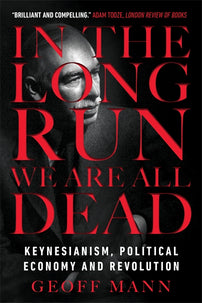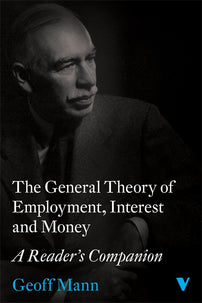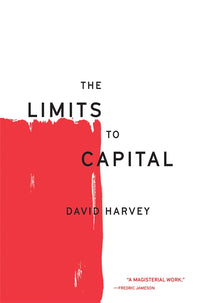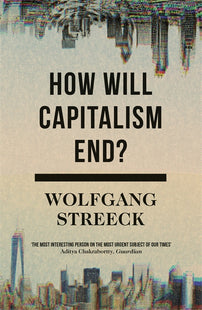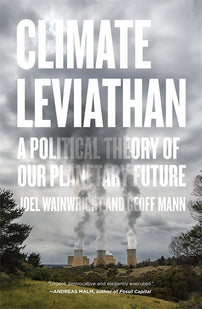War for Equilibrium
The spectre of war haunts modern capitalism. Yet, the history of economic thought is filled with attempts to overcome or conceal the crucial legitimising role that war plays. In this article, Geoff Mann looks at the role of war in the history and theory of capitalism.
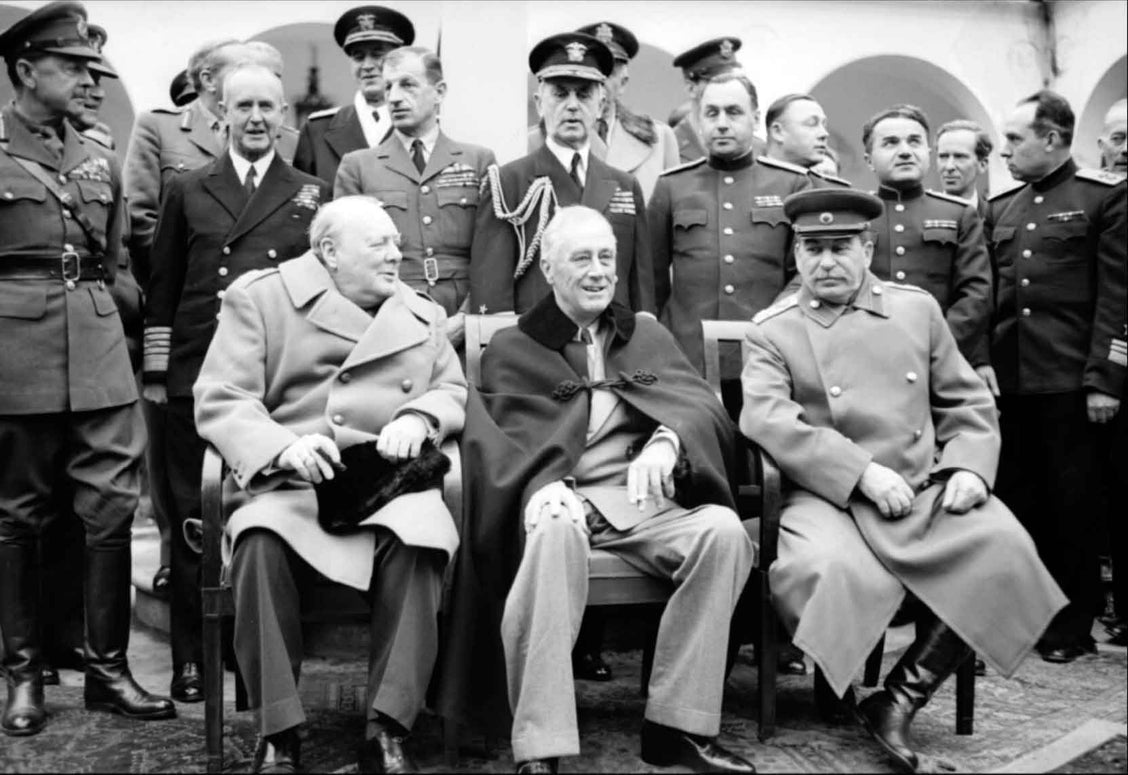
Although a little more fragmentary than I might like, my point in what follows is that the crucial legitimation-claims capital makes to itself are underpinned by the promise of an economic context unrealizable outside a state of total war. I also want to emphasize the absolutely essential role of this ideological operation—i.e. the need for capital to make sense to itself, to legitimize its rule in its own eyes—which is I think forgotten by ad hoc conspiracism or talk of bald “accumulation strategies”.
On the contrary, modern economic thought, at least and especially since Keynes, has consisted in an increasingly sophisticated attempt to overcome, formally, two crucial features of the history and theory of capitalism. First, the ideological, conceptual and institutional conditions imposed by the spectre of war; and second, the contradictions in which capital is necessarily ensnared by war. Although the attempt to overcome these conditions looks like a losing bet, its success or failure is in fact indeterminate, not least because the test of success depends on how one defines “success” ex post.
Before I arrange the fragments, however, it is worth remarking on three arguments I am not making—not to say I disagree, but only that my point is different.
First, mine is not the Hobbesian argument that “Covenants, without the Sword, are but Words”.[1] It is true that violence and the “police state” make capitalism possible because they guarantee the property regime upon which it depends, but this has no determinate relation to war, as Hobbes understood. Indeed, the whole point of Hobbes' argument for Sword-and-Covenant is that it subdues social conflict.
Second, to say that capitalist economies commonly operate in, and are judged relative to, the shadow of a potential state of total war, and that this condition is grounded in the sense-making behind general equilibrium theory, is not to highlight the foundation of modern economic orthodoxy in military projects and funding (however true that characterization is, as Philip Mirowski has meticulously demonstrated).
Third, the idea of “war for equilibrium” is not another account of war as a means for surplus absorption in accumulation crisis.[2] This too seems to me pretty convincing. But instead I mean to argue that war haunts orthodox economic reason—i.e. the general equilibrium framework—not as intellectual inspiration or crisis “fix”, but as the condition of possibility for general equilibrium as a way of knowing and as an economic “state of being”.
War determines the way capitalism’s possibilities are conceived, even if capital, and individual capitalists, neither desire nor use war to achieve their ends. Contemporary capitalism’s capacity to disown this fact is one of its chief coping mechanisms. This is not to say that capital is “actually” peaceful and stabilizing—a claim that can never hold for such a heterogeneous set of groups and relations—but rather that ceteris paribus, capital is no more interested in the unpredictable and destructive force of war than any other group.[3] For war is—or at least I will argue it is—in many ways a state of 'pure contradiction' from the perspective of capital.[4]
Consequently, capital struggles, often against the imperatives of capitalist reason, to achieve in “peace” what war has shown it can readily do—i.e. to produce a full-employment, all-engines firing economy. Post-World War II general equilibrium theory emerged and continues to stand as a two-sided coin minted by this problem: on the one hand, it represents the most sophisticated “proof” of the possibility of non-war full employment; on the other, more than any other pillar of capitalist sense-making, it highlights capitalism’s failure to meet the productive standards set by war.
Fragment I—Say’s Law
Any understanding of equilibrium reckons with the force of what Keynes called Say’s Law, commonly summarized as “supply creates its own demand”. In other words, Say’s Law says that if a commodity is offered on the market, it will find a buyer, enabling the “full employment” of all resources.
Keynes destroyed the logic of Say’s Law in the General Theory, but it nonetheless remains fundamental to modern economics, and essential to the general equilibrium framework, where it underwrites the assumption that markets are “perfect”.[5] It is worth noting, however, that the common summary of Say’s Law neglects the key condition of infinitely flexible prices: according to Say, supply creates its own demand if and only if prices adjust to clear markets. This remains the fundamental theoretical basis for capital's opposition to state “meddling”.
In any event, while originally founded in the work of Smith and Ricardo, the most famous operationalization of Say’s Law is the general equilibrium framework developed by Léon Walras and others in the 1870s, and elaborated by Marshall at the end of the 19thcentury. Walras—a socialist, it turns out—believed that equilibrium prices in markets were achieved via tatônnement (“groping”), a process he explained via the metaphor of an auctioneer. This framework posited—but could not formally prove—the existence of a “general” equilibrium, i.e. a vector of prices that would simultaneously clear all markets.[6]
The most important feature to remember of this fragment is the fact that in its very formulation, and despite the Keynesian critique, general equilibrium theory always contains in its “rational kernel” the idea of “full employment”, a state in which markets clear, at all times and places, using all their productive resources.
Fragment II—Full Employment at War
Despite its widespread recruitment in modern economic thinking, orthodox economists rarely take Say’s Law as an accurate description of how things work in the “real world”. It persists, rather, because it is essential to equilibrium's formal logic. If markets do not clear, then the forces of supply and demand cannot explain price determination, the basis of the entire classical and neoclassical edifice. In other words, without the implication of Say’s Law, economics is to a significant extent “mathematically” disabled. Consequently, the rule of Say’s Law is upheld analytically, while it is nevertheless accepted as “unrealistic”.[7]
The state of exception in which this mismatch between formal logic and history is effectively erased is a state of war. “All economists agreed that Say’s Law would apply in wartime”—even Keynes.[8] “Output would be pushed to the highest possible level and aggregate demand, including military spending, would have to accommodate”.[9] The argument is by no means restricted to modern economics. For example, it is common wisdom that WW II “ended” the Great Depression, and the same basic argument underwrites the idea of “military Keynesianism”,[10]not to mention the theories of an imperialist “spatial fix”, including Harvey’s variant,[11] and those upon which it built (Hegel, Marx, Hobson, Luxemburg, Lenin, and Hirschman).
Here, the important point is that from the perspective of what we might call capitalist reason, war is the state in which full employment equilibrium is realizable, and it is the product of a command economy. In fact, the persistence of conditions anywhere near full employment, such as that enjoyed by England throughout much of the 19thcentury, was taken to require a state interested in conducting wars of what Keynes considered “sufficient frequency”.[12]
Yet, in all cases, these wars for equilibrium were foreign wars, destruction abroad stimulating production at home. No capitalist wants domestic war—they will barely tolerate domestic opposition—a lesson that certainly did not need to be taught to Europe or Asia. But North America, and the US in particular, was forced to radically reconceive the concept of full employment equilibrium in the atomic age. It is no accident that the desperate search for a general equilibrium concept of peacetime economy began—in the US—at the onset of the Cold War, when the American state and capital confronted the possibility of domestic destruction.
In the immediate post-WW II era, this conceptualization of the productive role of war, paired with a perception that it would be increasingly difficult to contain abroad, completely dominated economics and economic policy throughout the industrialized world. Before the war even ended, fears that the boom would collapse into a peace-induced bust shaped states’ and capitals’ plans for the future.[13]
Fragment III—Kaleckian Complications
Among the most important, if ultimately empty, effects of this profound awakening—i.e. the recognition that war simultaneously realizes capitalism's potential and threatens its destruction, and that the command economy actually produced what capital claimed it alone could achieve—was the “full employment” legislation enacted across the industrial capitalist nations. These programs were also driven by a newly-empowered working class demanding the realization of the political economic possibilities the war economy had rendered imaginable.
Many suggest that what led capital to acquiesce, if reluctantly, to full employment guarantees was the political power of labour and the ideological wake of the “war at home”. Oft-forgotten are other concerns that led capital to the Fordist bargaining table, which included not only the need for “industrial co-operation”, but for European recovery, the maintenance of freshly-consolidated American hegemony, and the ideological and political demands of increasingly frigid geopolitics.
The convergent-yet-contradictory imperatives in these politics expose the irrepressible tensions produced in capitalist reason by the spectre of war. On one hand, full employment was the optimal capitalist condition; on the other it seemed to require an armed conflict no-longer-dependably-extraterritorial. Moreover, full employment was not at all in capital's or individual capitalists’ interest as they understood it. As the economist Michal Kalecki put it in 1943, there are three reasons for capital’s opposition to full employment programs:
(a) dislike of government interference in the problem of employment as such; (b) dislike of the direction of government spending/public investment and subsidizing consumption; (c) dislike of social and political changes resulting from the maintenance of full employment.[14]
Each of these matters, but I want to focus on the first and third.[15] First, Kalecki points out that under laissez-faire, “the level of employment depends to a great extent on the so-called state of confidence. . . . This gives to capitalists a powerful indirect control over government policy: everything which may shake the state of confidence must be carefully avoided because it would cause an economic crisis.” If the state “learns the trick” of increasing employment on its own, “this powerful controlling device loses its effectiveness”.[16]
Second, if these reasons for opposing full employment initiatives are overwhelmed by popular support, then the achievement of any permanent condition approximating full employment would “give new impetus” to capital's opposition, since “‘the sack’ would cease to play its role as a disciplinary measure”:
The social position of the boss would be undermined and the self-assurance and class consciousness of the working class would grow. Strikes for wage increases and improvements in conditions of work would create political tensions.[17]
These “Kaleckian reactions”[18] sour the promise of full employment for capital—at least outside of the command economy, however unappealing that is for other reasons. Indeed, they render it so sour as to produce a capitalist politics that rejects the very logic of capital. As Kalecki writes, while it “is true that profits would be higher under a regime of full employment than they are on the average under laissez-faire. . . ‘discipline in the factories’ and ‘political stability’ are more appreciated by the business leaders than profits. Their class instinct tells them that full employment is unsound from their point of view and that unemployment is an integral part of the capitalist system.”
So, while full employment is the dream, and the frame through which the circuit of capital was modeled and judged, at the same time it depends upon a potentially devastating set of relations, and in fact threatens to displace the hierarchy of power on which capitalism rests in its entirety. The result is a domestic politics on the part of capital that abjures its own reason and its own “rational” interest, i.e. profit maximization.
Fragment IV—Non-Capitalist Capitalism
After WW II, the complexities resulting from the confusion afflicting American capital also manifested itself in the international arena, in the shape of the Marshall Plan. As Georges Bataille wrote, the Plan began as a “means external to capitalism to rais[e] the standard of living”, an investment in the “general interest”, as opposed to the 'isolated interests' of specific capitals.[19]
Bataille reads this as a kind of rapprochement with the Soviet system, an at-least momentary rejection of the “law of profit”. Be that as it may, I want to flag that although this understanding of the Marshall Plan highlights the ways in which it shares a partial rejection of capitalist reason with Kaleckian reactions in the domestic sphere, the product is radically different. The effects of peace-time domestic (full employment) equilibrium lead capital to reject it, in favour of a less profitable, but politically preferable, laissez-faire.
For Bataille, the most troubling potential future trajectories lay in the terrible fact that with the onset of the Cold War, we “must now expect from the threat of war that which yesterday it would have been callous but correct to expect from war”:
In this situation of absolute schism what prevents one from believing war to be inevitable is the idea that under the present conditions, "the economy," to alter Clausewitz's phrase, might “continue it by other means.”. . . Mankind will move peacefully toward a general resolution of its problems only if this threat [of war] causes the US to assign a large share of the excess—deliberately and without return—to raising the global standard of living, economic activity thus giving the surplus energy produced an outlet other than war.[20]
It is this entanglement Keynes anticipated, and it goes a long way to explaining the long-standing appeal of his thought to so many. His answer, as we all know, was the state, and the capitalist command economies of war seemed to prove him right.[21] Indeed, if, as Kalecki says, “[o]ne of the important functions of fascism . . . was to remove the capitalist objections to full employment”, then we might even say that Keynes proposed a fascism without fascists.[22]
Final (Fragmentary) Thoughts
Post-war general equilibrium theorists—the children of Ricardian and Walrasian economics—faced the same political economic quagmire, at the same historical moment, but dismissed, a priori, the Keynesian answer. They had somehow to posit the existence of a peace-time full employment general equilibrium without state coordination, made possible by capital. Ideal, of course, would be situation in which general equilibrium was realized solely by an “unfettered” capitalism, but one which required only “voluntary exchange” between capital and the state was nonetheless acceptable.[23]
General equilibrium theory—worked out by economists like Kenneth Arrow and Gérard Debreu with rich financial and institutional support from key market-fundamentalist and anti-communist institutions like RAND Corporation and the Cowles Commission[24]—was an attempt to demonstrate that equilibrium need not rest on war.[25] The very first, and most important, task they took up was the “question of existence”.[26] The problem was to identify, formally, the logical possibility that general full employment equilibrium could exist at all. Leaning heavily on newly-developed game-theoretic approaches to agent interaction[27], Debreu and Arrow formally proved the “existence” of general equilibrium for an “abstract economy” in the mid-1950s.
I want to stress that the Arrow-Debreu or AD model—which has shaped economics indelibly—was not only an exercise in defense-funded science envy.[28] On the contrary, it was a keystone in the ideological edifice of what we now know as neoliberalism. Only a couple of years before, Arrow himself had demonstrated the formal impossibility of a consistent social welfare function, i.e. the impossibility of increasing collective welfare to make everyone better off. Together, “Arrovian impossibility”, and the 'proof' of full employment general equilibrium in a “competitive economy” provide the theoretical foundations for the rejection of the Keynesian marriage of the state and civil society.
Whereas Keynes suggested that via the intelligence of the state, war might be displaced as a measure of capitalism’s potential—something he tried to realize in his designs for the World Bank, International Monetary Fund and (the never-established-because-of-US-opposition) International Trade Organization—orthodoxy sought an escape route from war no less urgently. This attempt took contradictory form, and the mess in which it placed capitalist reason remains unresolved. The logical and political mismatches at the heart of post-war US economic policy stand in stark contrast to the elegance, impenetrability, and austerity of the ne plus ultra of capitalist reason: general equilibrium.
Moreover, the problem persists at least partly because the AD model is posited explicitly as a normative frame for capitalist economies. It tries to banish the spectre of war by constructing an alternative measure of full employment that is, ironically, a hell of a lot less likely than war. We live constantly with the repercussions of the fact that in capitalism, the gap between these probabilities cannot escape notice.
Geoff Mann is Director of the Centre for Global Political Economy, Simon Fraser University. His book In the Long Run We Are All Dead: Keynesianism, Political Economy and Revolution is out now.
[1] Hobbes, Thomas (1968 [1651]) Leviathan. London: Penguin.
[2] Sweezy, Paul (1963) The first quarter century, in Robert Lekachman (ed.) Keynes' General Theory: Reports of Three Decades. New York: St. Martin’s, 305-14. Retort (2005) Afflicted Powers: Capital and Spectacle in a New Age of War. New York: Verso.
[3] Schumpeter, Joseph (1955) Imperialism, Social Classes: Two Essays, trans. Heinz Norden. Cleveland: Meridian Books.
[4] Thus, it is grossly to simplify and underestimate the relationship between capitalism and war to assert either that capitalism inevitably produces war or that “according to the ‘pure’ capitalist mode of life, the bourgeoisie is unwarlike” (Schumpeter 1955: 96).
[5] Sweezy (1963: 305) writes that Keynes’ “greatest achievements were freeing economics from the tyranny of Say’s Law and exploding the myth of capitalism as a self-adjusting system which reconciles private and public interests.” In light of this achievement, it might be hard to explain the continuing dominance of the myth of self-adjustment and complete markets. According to Keynes (1965: 33), the victory of “the Ricardian economics”, even though it so plainly contradicted common sense, was due to its prestige (it made no sense to the uninitiated), its virtue (it was austere, rigid and “unpalatable”), and its beauty (in its “consistent logical superstructure”):
That it could explain much social injustice and apparent cruelty as an inevitable incident in the scheme of progress, and the attempt to change such things as likely on the whole to do more harm than good, commended it to authority. That it afforded a measure of justification to the free activities of the individual capitalist, attracted to it the support of the dominant social force behind authority.
[6] Arrow, Kenneth and Debreu, Gérard (1954) Existence of an equilibrium for a competitive economy. Econometrica 22(3): 265-90.
[7] Milton Friedman famously defended this blatant dismissal of reality with the claim that the realism of assumptions was irrelevant if the analysis could tell us something useful about the real world—the kind of question-begging “logic” for which he should be better known.
[8] It bears emphasis that Keynes envisioned a condition in war-time “approximating” full employment. As he wrote in The General Theory (1965: 324): “I assert that a state of full employment in the strict sense has never yet occurred, not even momentarily.”
[9] Taylor, Lance (2010) Maynard’s Revenge: The Collapse of Free Market Macroeconomics. Cambridge: Harvard University Press.
[10] Retort (2005) Afflicted Powers: Capital and Spectacle in a New Age of War. New York: Verso.
[11] Harvey, David (1981) The spatial fix—Hegel, von Thünen, and Marx. Antipode13(3): 1-12.
Harvey, David (1999 [1982]) The Limits to Capital. New York: Verso.
[12] Arrow, Kenneth (1963 [1951]) Social Choice and Individual Values, 2nded. New Haven: Yale University Press.Bataille, Georges (1991 [1949]) The Accursed Share, vol. I, trans. Robert Hurley. New York: Zone Books.
[13] The narrative went that the end of war-industrial employment would depress demand, while inflation unleashed by the termination of price controls in core industries would spiral out of control. Indeed, while these fears proved exaggerated, they were not without warrant: in the early 1950s US leaders were telling the National Security Council that “Korea saved us” (Retort 2005: 88)—because it was war, but even more because it was a war in Korea, i.e. elsewhere.
[14] Kalecki, Michal (1973 [1943]) Political aspects of full employment, in The Last Phase in the Transformation of Capitalism. New York: Monthly Review Press, 75-83. Lenin, Vladimir Ilyich (1963 [1917]) Imperialism: The highest stage of capitalism, in Selected Works, vol. 1. Moscow: Progress Publishers, pp. 667-766.
[15] The second is a “crowding out” argument (Kalecki 1973: 77-8).
[16] “The social function of the doctrine of ‘sound finance’ is to make the level of employment dependent on the ‘state of confidence’” (Kalecki 1973: 77).
[17] Kalecki 1973: 78
[18] Streeck, Wolfgang (2011) The crises of democratic capitalism. New Left ReviewII/71: 5-29.
[19] Bataille is taking up an argument made by Francois Perroux (of “growth pole” fame), in his 1948 Le Plan Marshall ou l'Europe Nécessaire au Monde. Paris: Librarie de Médicis. 1991: 185
[20] 1991: 171, 187; original emphasis
[21] If in a much more limited and specific manner than is usually associated with “Keynesianism”.
[22]1973: 79
[23] Tanzi, Vito (2011) Government versus Markets: The Changing Economic Role of the State. Cambridge: Cambridge University Press.
[24] Hildreth, Clifford (1985) The Cowles Commission in Chicago, 1939-1955. Discussion paper No. 225, Center Economic Research, University of Minnesota.
Mirowski, Philip (2002) Machine Dreams: Economics Becomes a Cyborg Science. Cambridge: Cambridge University Press.
[25] Both Arrow and Debreu worked out early versions of their research on general equilibrium and the social welfare function (the Arrow “impossibility theorem”) at RAND; see Arrow 1948; Debreu 1952.
Arrow, Kenneth (1948) The possibility of a universal social welfare function. Santa Monica, CA: RAND Corporation. http://www.rand.org/pubs/papers/P41.html.
Debreu, Gerard (1952) Saddle point existence theorems. Santa Monica, CA: RAND Corporation. http://www.rand.org/pubs/papers/P264.html.
[26] Debreu, Gérard (1984) Economic theory in the mathematical mode. Scandinavian Journal of Economics86(4): 393-410.
[27] von Neumann, John, and Morgenstern, Oskar (1944) Theory of Games and Economic Behavior. Princeton: Princeton University Press.
[28] Mirowski, Philip (2002) Machine Dreams: Economics Becomes a Cyborg Science. Cambridge: Cambridge University Press.
[book-strip index="1" style="display"]